Hydrocele
Hydrocele, or as the people say - dropsy of the testicle in children - is a disease in which there is an excessive accumulation of fluid in the scrotum, between the membranes of the testicle. Due to the excessive accumulation of fluid, which can be represented by lymph, intercellular fluid, blood, or even pus, the corresponding half of the scrotum significantly increases in size, acquires a pear-like shape, and becomes denser. The total volume of liquid can range from a few milliliters to 2-3 liters (in advanced cases).
What forms of the disease are isolated?
Distinguish between congenital and acquired hydrocele. Congenital dropsy of the testicle is diagnosed, as a rule, when examining a child in a maternity hospital. Based on the mechanisms of formation, the anatomical structure of the scrotum, and the presence of concomitant complications, the following forms of dropsy of the testicle in children are distinguished:
- communicating - when the closure of the processus vaginalis is disturbed, the cavity of the testicle membrane is "connected" to the abdominal cavity. As a result, peritoneal fluid accumulates and circulates in the scrotum. When the lumen of the peritoneal process is closed with an omentum, communicating dropsy can transform into a non-communicating (isolated);
- isolated - if the testicular membranes remain isolated from the abdominal cavity;
- complicated - when a hydrocele is complicated by the addition of pathologies such as a hernia, infectious processes, or ruptures of the testicular membranes;
- uncomplicated - if the disease proceeds without complications;
- bilateral - observed with damage to both testicles;
- unilateral - pathology affects only one half of the scrotum;
- tense - when the fluid in the cavity is under pressure, which does not allow it to leave it, therefore, such dropsy is almost always not communicating;
- unstressed - if there is no fluid pressure;
- reactive - occurs with the development of inflammatory processes of the genital organs or injuries in adolescents.
Congenital dropsy of the testicle can be either communicating or isolated. In children under one year old, the accumulation of fluid that does not communicate with the peritoneal cavity is considered a physiological norm, and usually, by the age of 1-2 years, this condition disappears, only in 6% of boys the hydrocele remains clinically significant.
The reasons for the development of hydrocele in boys
- violations of the normal course of the embryonic period. If the process of childbirth does not overgrow the vaginal process of the peritoneum, this contributes to the formation of a connection between the scrotum and the abdominal cavity, the flow and accumulation of peritoneal fluid in the scrotal cavity.
- a complicated course of pregnancy and childbirth in the mother;
- in boys over 3 years of age, hydrocele is usually secondary. Such changes are preceded by testicular torsion, trauma to the scrotum, inflammatory diseases (orchitis, epididymitis, etc.), tumors of the testicle and its epididymis;
- a complication of ARVI, flu, mumps, and other infectious diseases;
- a postoperative complication of hernioplasty or surgery for varicocele.
Symptoms of dropsy of the testicle
Usually, pathology is discovered randomly by a pediatrician during preventive examinations or by parents during daily hygiene procedures. Visually, you can determine the increase in the size of the scrotum on one or two sides. With an isolated form of this pathology, the volume of tissues increases gradually; in the case of a communicating form, the sizes can change depending on the position of the body, motor activity, and the place of accumulation of fluid. Dropsy of the testicles by itself does not cause pain, discomfort, itching, or other unpleasant manifestations in the child. Babies are often naughty, tossing and turning, worried, and older children may complain of discomfort when walking, running, a feeling of heaviness, and bursting in the groin. In some cases, the hydrocele is accompanied by the formation of an inguinal unilateral or bilateral hernia.
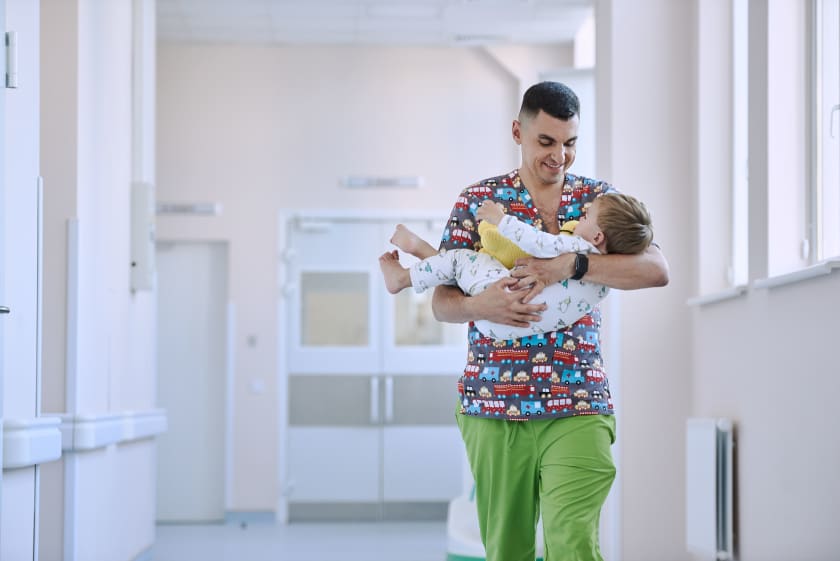
Diagnostics
A child with this pathology should be shown to a pediatric urologist. At the initial consultation, the specialist collects an anamnesis of the baby's life, information about the course of his mother's pregnancy. Then he examines the boy in the supine position and upright - this makes it possible to differentiate communicating dropsy from the isolated one. After that, the little patient needs to undergo a series of studies, which includes general clinical laboratory tests and instrumental examinations. Applicable:
- Diaphanoscopy - transillumination of the scrotum using a special "flashlight". If the disease is not complicated, the testicular membranes have a uniform color.
- Ultrasound of the groin area, which allows you to detect the presence of a communicating type of pathology, determine the exact amount of fluid, exclude tumor processes and other diseases of the scrotum.
Treatment
Diagnostics and treatment are carried out under the supervision of a pediatric urologist. There are the following treatment options:
- Wait-and-see tactics. At the age of 1-2 years, dynamic observation is usually used, and if the child's condition does not return to normal, surgery is indicated.
- Drug therapy may be required for isolated hydrocele in children against the background of acute epididymitis and orchitis, with allergic edema of the scrotum. In such cases, rest, wearing a bandage to immobilize the scrotal organs, antimicrobial and desensitizing drug therapy is required.
- Puncture and removal of fluid provide quick relief, but in this case, relapse is possible, especially with the communicated form of the disease.
- Surgery to remove dropsy of the testicle in a child. Depending on the course of the disease, specialists use different surgical techniques. Most often, for hydrocele, the Ross and Winckelmann operations are performed.
Operation Ross. The doctor makes an incision in the groin and sutures the channel between the scrotum and the abdomen through it. The Ross operation is indicated for communicating hydrocele of the congenital type. The procedure takes about 30 minutes and is under general anesthesia. After surgery for dropsy of the testicle, children are advised to limit physical activity and not wet the surgical wound. After 1-2 weeks, the stitches are removed.
Operation according to Winckelmann. During this surgical intervention, a 5-6 cm long incision is made, the testicular membranes are cut in turn, and, having found the watery membrane, the surgeon fishes the organ out of the wound. Using the puncture method, fluid is pumped out, this membrane is dissected, inverted, and sutured behind the testicle.
Bergman's operation. It is carried out with a large accumulation of fluid, as well as thickening of the membranes. The incision is 3-4 cm. The water sac is separated from the local tissues, opened with further pumping out of the liquid, its shells are removed. Catgut sutures are applied to the skin, and drainage is placed in the wound.
When infected, the urologist prescribes a course of antibiotics.
Why is it necessary to treat the dropsy of the testicle?
The testicle is extremely sensitive to temperature fluctuations and can function properly within a limited temperature range. An increase in testicular temperature even by tenths of a degree can lead to impaired development and function of the testicle.
A hydrocele is an additional layer around the testicle that interferes with the normal release of heat and leads to overheating of the organ. This can be fraught with disturbances in the processes of spermatogenesis and the hormonal function of the testicle, which in the future can lead to adverse consequences, up to infertility.
Specialists of the Dobrobut network of medical clinics in Kyiv have extensive experience in performing operations to remove dropsy testicles in children. Our doctors are some of the best surgeons in Ukraine, which is confirmed by the feedback from grateful clients. We use only modern equipment, provide an individual approach to each patient, provide quality service, and all this at affordable prices. The cost of an operation for dropsy of the testicles may vary depending on the individual characteristics of the child.
Bibliography
- S. Tekgül, H.S. Dogan, etc - Guidelines on Paediatric Urology. Published online, 2015.
- Hydrocele - American Urological Association. Last updated 2021.
- eha Pathak - Hydrocele. Published online, August 10, 2020.
- Hydrocelectomy & Hydrocele Treatment. Published online, September 8, 2016.
- Hydrocele - Diagnosis and treatment - Mayo Clinic. Published online, December 05, 2020.
Our advantages
Our services
Choose the nearest clinic to you
ISO certificates
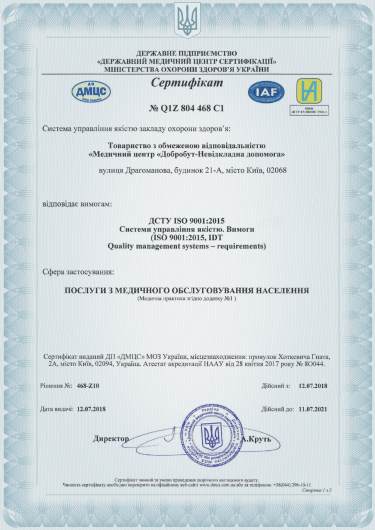
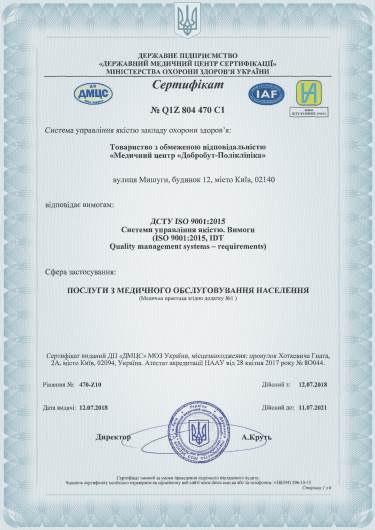
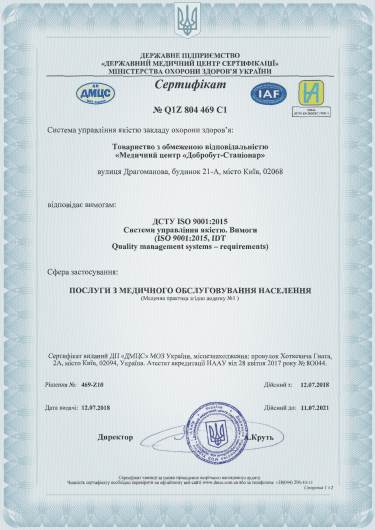
Accreditation certificates
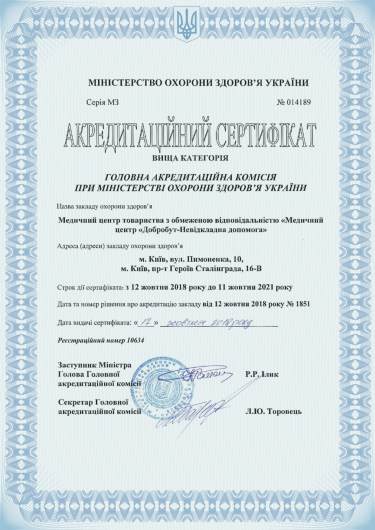
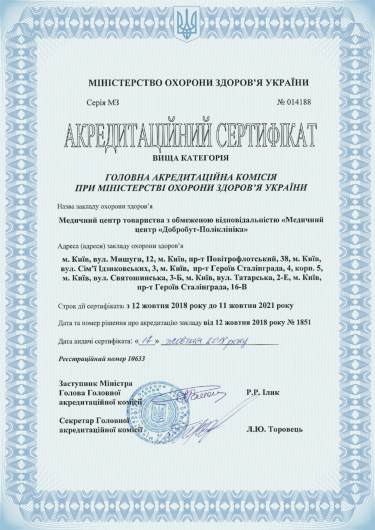

Medical practice licenses
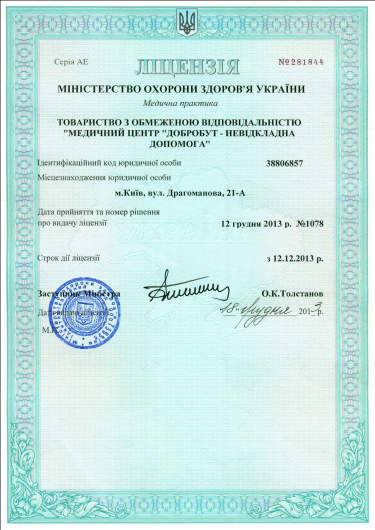
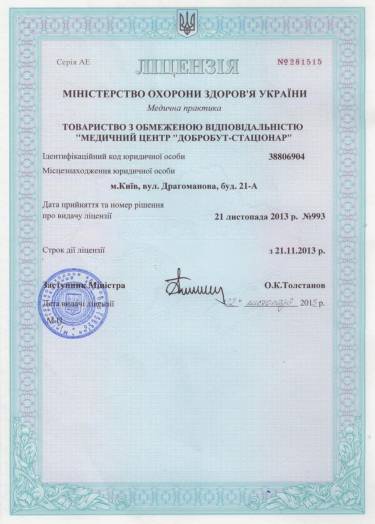

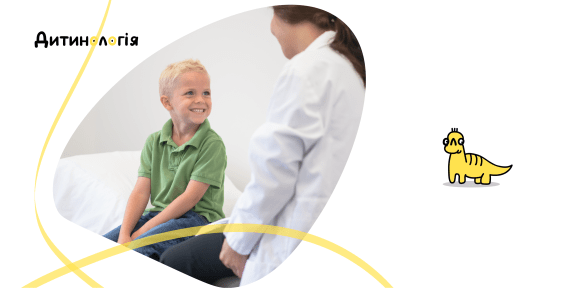





@2x.png)
@2x.png)
%402x.png)
%402x.png)
